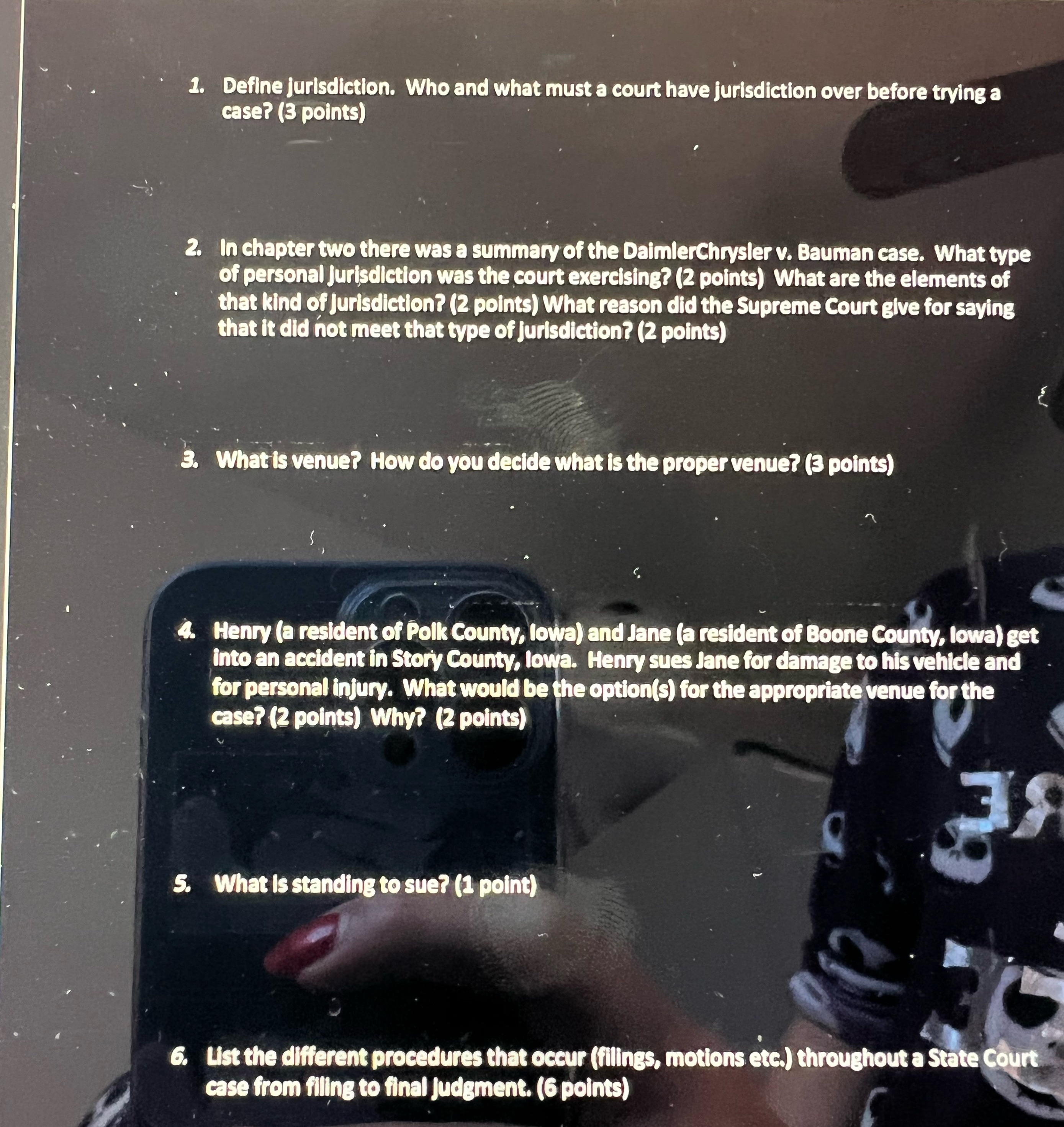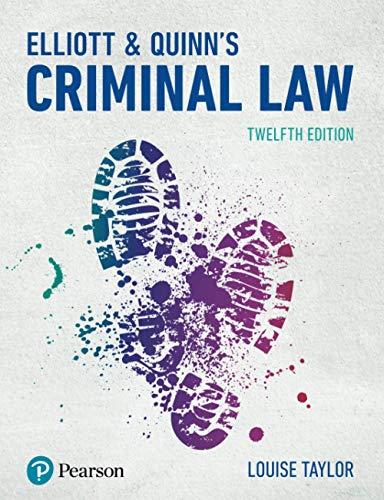Question
The answers have to be from the down description unless it will be plagiarism! court procedure There are two ways that cases are resolved once
The answers have to be from the down description unless it will be plagiarism!
court procedure There are two ways that cases are resolved once a lawsuit has been initiated. Either the cases go to trial in a court of law or they are resolved by use of one of the forms of alternative dispute resolution.
Reading Chapter 2, you will see the basic procedures that are required to litigate a case and you will also read about all of the different kinds of alternative dispute resolution.
Prior to a case going to trial, there are several things to think about. Before you can ever bring a lawsuit, you must have a case that involves a justiciable controversy (something that has a legal basis for being brought before the court). The person filing the lawsuit must have standing to sue, which means they have a personal stake in the outcome.
Once you decide that you have a valid case, you have to decide which court to file in and which county or location. The court with proper jurisdiction is the court where the lawsuit is filed. Last week you learned about the courts in lowa and what type of jurisdiction they have. A court must have personal jurisidiction and subject matter jurisdiction in order to hear a case.
So even if you know you are filing in the district court level because you had a car accident where the injury or damage exceeds $10,000.00, you must determine whether the court has personal jurisdiction over the defendant. If you are an lowa resident and the defendant is an lowa resident and the accident occurred in lowa, that answer is easy. The lowa District Court has jurisdiction over the parties and the subject matter. This question becomes a little more complicated if you are suing residents from other states. If the accident happened in the state of lowa and was with a driver who is a resident of Montana, are you able to sue the Montana resident in the state of lowa? In the chapter you will read about the long arm statute. This statute basically says that courts of one state are able to reach out (long arm) and exercise jurisdiction over residents of other states if the resident of the other state has sufficient minimum contacts with that state. The fact that someone was driving in the state of lowa will be sufficient minimum contacts with this state. So the court in the State of lowa would have personal jurisdiction over that Montana resident.
The next question involves venue. If you were involved in a car accident in Polk County, Iowa with the Montana resident. The lawsuit should be filed in the lowa District Court for Polk County. Venue is the most appropriate place to file the lawsuit.
The lawsuit is filed with a petition stating what the legal grounds are for the lawsuit and the relief requested. The defendant is then served and then the defendant must file an answer. At that point, the parties engage in discovery (fact finding) for the purpose of obtaining evidence and information about their case. There are many forms of discovery that can happen during a case. Interrogatories are written questions that must be answered under oath by a party. Request for documents is a request for the other party to produce certain papers in their possession such as: medical records, police reports, insurance policies, etc. A deposition is an in person question and answer format of discovery where the attorney can ask the other party or a witness relevant questions to the case. The following youtube link give a brief example of a (heated) deposition.
At the time of trial, a jury is selected (if it is a jury trial), the Plaintiff (1st) and the Defendant (2nd) give opening statements. The opening statements are a summary of the case the attorney intends to present but does not serve as evidence in the case. The Plaintiff then calls witnesses and does direct examination of their witnesses with the purpose of allowing their witness to tell their story and get the facts out as they understand them. Then the defense will cross examine each of the witnesses with the goal of trying to either discredit the witness or get out additional information from them that is helpful to their side. When the Plaintiff is done with witnesses, the defense will call witnesses for direct examination and the Plaintiff can cross examine them. Here is a clip showing you what cross examination is really like. You can see that the witness is being a little difficult (normal) and the attorney is getting frustrated (also fairly normal): The plaintiff will have a chance to call rebuttal witnesses and then each side presents closing arguments.
There is a large movement towards ADR, alternative dispute resolution. This involves different methods that are used in order to settle cases without litigation. It is much less costly to the parties and tends to give the parties a little more power to decide the fate of their own case. There are several types of ADR. Most parties regularly engage in negotiations throughout their case where they try to settle it. Mediation has also become common because a third party (often an attorney) is helpful to assist the parties in reaching a resolution. In a mediation, the parties still get to make their own decisions about their case and a settlement is not mandatory, but the third party is very helpful in informing the parties regarding fairness and what may or may not happen in the courts. Arbitration is often required in contracts. If you read some of your contracts closely (phones, travel, etc.), they probaly require you to engage in arbitration if their is a dispute. This type of ADR gets your case out of the court system so a resolution can occur faster, but takes decision making out of your hands because the arbitrator often is making a binding decision just as a judge or jury would do.
Our court systems are so overloaded with cases right now, that parties, lawyers and judges have been favoring ADR more and more. If we did not use ADR to settle at least some of our cases, litigants would be waiting months or years for their trial dates.

Step by Step Solution
There are 3 Steps involved in it
Step: 1

Get Instant Access to Expert-Tailored Solutions
See step-by-step solutions with expert insights and AI powered tools for academic success
Step: 2

Step: 3

Ace Your Homework with AI
Get the answers you need in no time with our AI-driven, step-by-step assistance
Get Started


